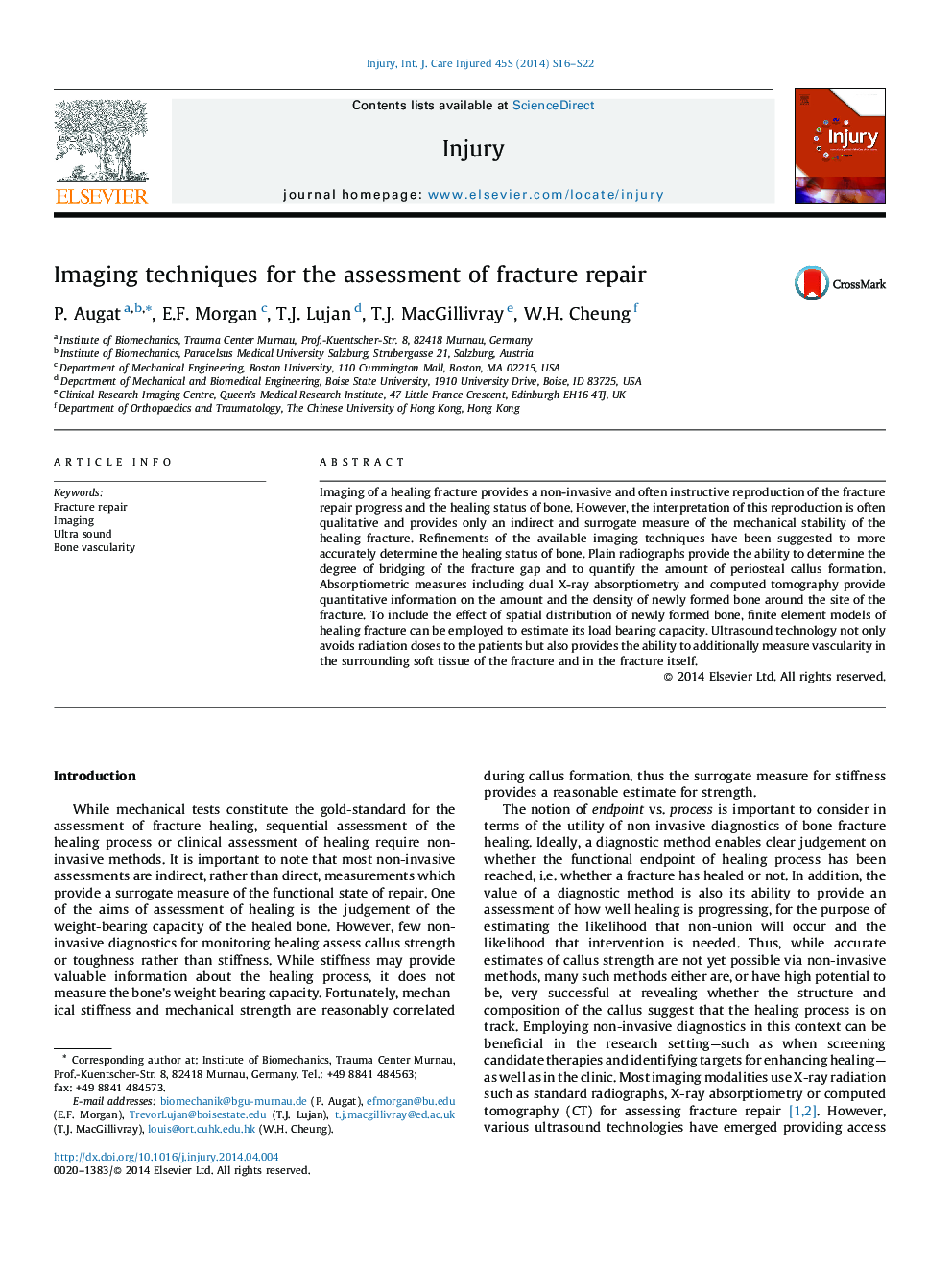| Article ID | Journal | Published Year | Pages | File Type |
|---|---|---|---|---|
| 3239747 | Injury | 2014 | 7 Pages |
Imaging of a healing fracture provides a non-invasive and often instructive reproduction of the fracture repair progress and the healing status of bone. However, the interpretation of this reproduction is often qualitative and provides only an indirect and surrogate measure of the mechanical stability of the healing fracture. Refinements of the available imaging techniques have been suggested to more accurately determine the healing status of bone. Plain radiographs provide the ability to determine the degree of bridging of the fracture gap and to quantify the amount of periosteal callus formation. Absorptiometric measures including dual X-ray absorptiometry and computed tomography provide quantitative information on the amount and the density of newly formed bone around the site of the fracture. To include the effect of spatial distribution of newly formed bone, finite element models of healing fracture can be employed to estimate its load bearing capacity. Ultrasound technology not only avoids radiation doses to the patients but also provides the ability to additionally measure vascularity in the surrounding soft tissue of the fracture and in the fracture itself.
